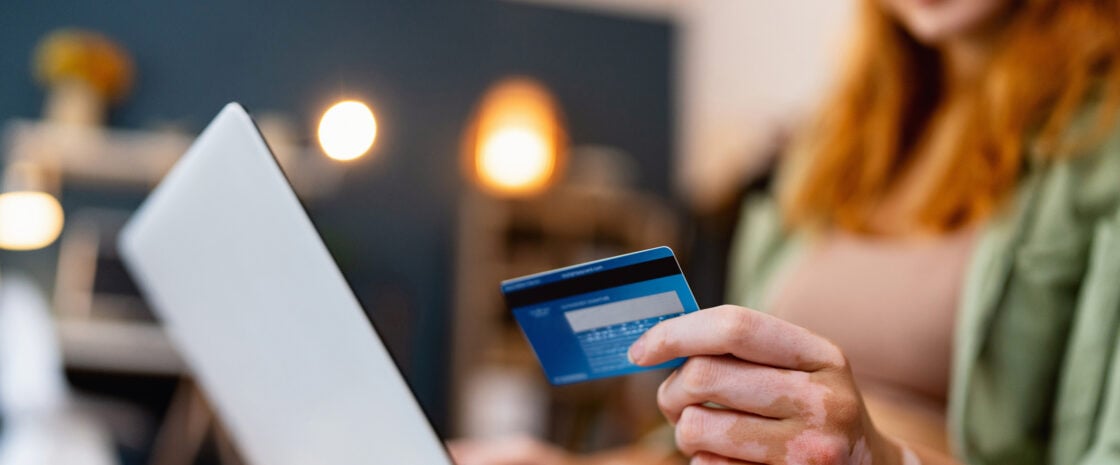The fastest and most convenient way to pay your credit card bill is via online banking through the app — or better still, as an Autopay from your everyday account or savings. However, it’s good to know you have options, in case you get into a cashflow bind.
Is it possible to pay a credit card from another bank?
You can pay a credit card from another bank, but it might cost you.
There are two possible options:
- Via BPAY, using the biller code and customer reference number
- As an Autopay from an external bank account.
Using a debit card from another bank to pay for a credit card is accepted. Businesses that offer BPAY accept payments from savings accounts and everyday debit accounts. Some, but not all, billers accept credit card payments, so check with your bank. BPAY transactions also incur a small fee. If you’re with Westpac, expect to pay 80 cents (plus GST) per BPAY transaction.
Depending on the company that issued your credit card, you might also be able to set up an Autopay credit card payment from a separate bank or financial institution. For example, in Westpac’s Card Autopay Request form, you can add an external bank’s account details as the payment source and then choose the schedule and amount.
» MORE: How to pay off your credit card
How to pay a credit card from a different bank
Check your credit card statement to see the payment options available to you. If you’re unsure, call the customer support line for a quick answer. Decide if you want to pay your bill with a debit card, credit card or savings account.
BPAY
Your credit card statement will include a biller code and customer reference number. Check to see if the biller accepts payments from a credit card. If not, you can use a debit card or a savings account.
To pay the bill, log into the bank you want to use to pay the bill. Navigate to BPAY and follow the prompts to complete the payment.
Direct debit: Autopay or manual
For the bank issuing the credit card bill, look to set up an auto payment from the external bank account. If you’re a Westpac customer, for example, you can make your repayments from either a Westpac or non-Westpac transaction account.
If you’re an NAB cardholder, you’ll need to select ‘Other Account’ in the Autopay setup.
Bank@Post: Australia Post
Some banks, such as NAB, offer credit card payments at Bank@Post Australia Post outlets. You can use a separate credit or debit card.
Other lenders have stopped accepting cash payments for credit card bills at Australia Post. Macquarie Bank, a popular alternative bank, now only accepts EFTPOS (or cheque) payments at Australia Post.
Telephone banking
You also can use telephone banking (self-service or speaking to a representative) to make credit card payments.
The customer service numbers for the big four include:
- CommBank: 132 221
- Westpac: 132 032
- NAB: 132 265
- ANZ: 131 314
Other ways to make credit card payments
While there might be times you need to use a credit card from another bank to repay a bill, or if it’s part of your strategy to accrue more points, be wary of the risks. There are credit card interest, cash advance fees and increased debt to consider. The additional points or convenience might not be worth it.
Separate account with the same bank
Instead, you could set up a separate account with the same bank as a ‘bucket’ that’s just for credit card payments. For every pay cycle, you could put 5% of it into your credit card repayment account. If you earn $750 a week after tax, that’s $37.50 per week or $150 monthly. Work out the percentage to put aside weekly based on your monthly bill.
Whichever credit card payment option you choose, make sure it gets you closer to your financial goals. Every fee and charge adds up. The best option is the repayment type that’s convenient and free. BPAY, cash advances, credit card payment fees and potential interest all come with caveats compared to no-fee autopayments.
» MORE: How do credit cards work?
Frequently asked questions about paying a credit card from another bank
Paying a credit card with a separate bank’s credit card is tricky. If you need to transfer cash from your credit card into your savings account to pay the bill from that account, you’ll incur a cash advance fee — usually 3% of the transaction.
BPAY is the best option to pay one credit card with another. There is a transaction fee, which differs from bank to bank. Westpac charges 80 cents (plus GST) for transactions from debit and credit accounts.
DIVE EVEN DEEPER

Can I Buy Crypto With A Credit Card?
Learn about the world of digital assets and whether or not you can buy crypto, like Bitcoin, with a credit card.

What Is A Credit Card Minimum Payment?
A credit card minimum payment is the minimum amount owed on your credit card statement’s closing balance. It’s typically 2% of the debt owed.

Credit Card Fees: What They Are And How To Avoid Them
Credit card fees can vary among providers. Find which charges are inescapable and which ones you can avoid.

What is Credit Card Churning?
Credit card churning is not for everyone. Learn about the high risks and the high rewards before committing.

